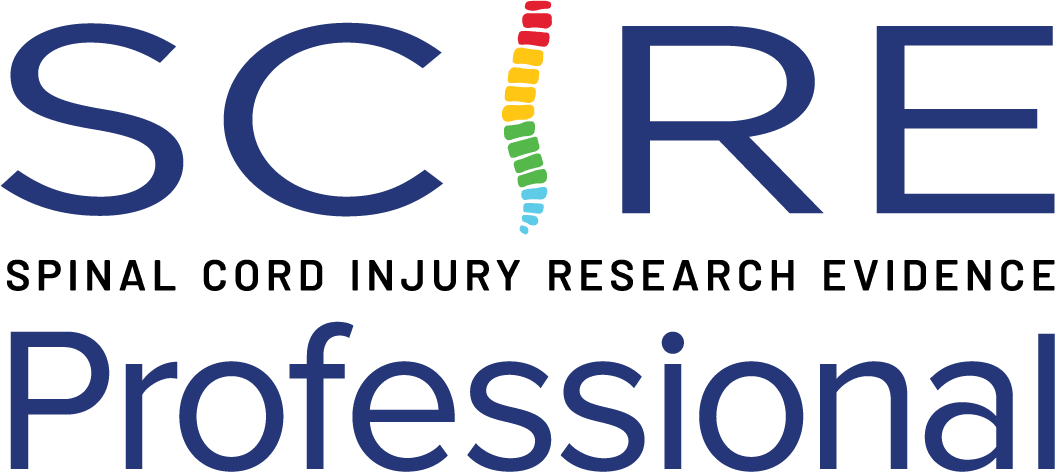Underwater Treadmill Training (UTT) and Aquatic Therapy (AT)
An intervention that has remained largely unexamined as a means of improving walking performance in people with SCI is underwater treadmill training (UTT) (Morgan & Stevens 2022). Primarily used in animal rehabilitation and sports medicine facilities, the use of a treadmill submerged in a self-contained, water-filled tank allows for the precise control of water depth, walking speed, and water temperature, a trio of variables that can markedly influence training responses (Stevens et al. 2015). In a typical overground treadmill harnessing system, a given percentage of body weight is supported, but the weight of the legs remains unchanged (Morgan & Stevens 2022). Hence, if leg strength is inadequate, external assistance is required to move the lower extremities during walking (Morgan & Stevens 2022). Conversely, use of water as an unloading medium during treadmill exercise reduces the weight of the legs and core weight, thus decreasing the strength needed for walking and body support while providing challenging, yet manageable, levels of resistance (Morgan & Stevens 2022). There are few studies assessing the effects on walking capacity and strength after an UTT intervention in persons with complete (Morgan & Stevens 2022) and incomplete (Stevens et al. 2015) SCI.
On the other hand, aquatic exercise has been reported to improve physical function and quality of life for patients with neurological disorders (Oh & Lee 2021). However, in people with SCI, the available evidence for aquatic therapy (AT) is scarce (García-Rudolph et al. 2024b). This has been shown in a systematic review from 2023, as only three studies with a total of 71 participants, using the FIM as an outcome measure, were included (Palladino et al. 2023). There is one recent study assessing the effects on walking ability and independence of AT in participants with acute SCI.
Discussion
Treadmill training performed in a water environment has been shown to serve as an effective alternative or support to land-based physical activity and walking programs in adults who experienced lower-limb muscle weakness (Stevens et al. 2015); however, there is limited research on this intervention for persons with SCI. Stevens et al. (2015) included 11 participants with incomplete SCI who completed eight weeks of UTT featuring personalized levels of BWS and incremental gains in walking speed and duration. There were reported gains (p < 0.05) of moderate to large magnitude in leg strength (57%) and preferred and rapid walking speed (34% and 61% respectively), 6-min walk distance (82%), and daily step activity (121%). Another pre-post by Morgan and Stevens (2022) included five participants with complete (AIS A) SCI; participants received a one-year training program that consisted of 2-3 UTT weekly sessions and, once independent stepping was accomplished for each participant during UTT, supplemental OWT with five stages of different functional exercises and tasks (Morgan & Stevens 2022). All participants registered a marked improvement in WISCI II scores over the 12-month training program with a large effect size (mean change = 8.2; range = 6–9; r = 0.65).
Although more research is needed, mainly because the sample size and quality of studies were low; the use of smaller, portable underwater treadmills may also extend the accessibility of UTT into public fitness settings to enhance ambulatory status and physical function in persons with SCI and other severe neuromuscular disorders (Morgan & Stevens 2022).
We only found one study assessing aquatic therapy (AT) and its effects on walking in people with SCI. García-Rudolph et al. (2024b) used a 10-step, 3-stage process using different positioning and progressive exercises to help individuals become independent with their movement in the water (based on the Halliwick concept). They found that after 10 weeks, the group of patients who received AT (n = 29) showed significantly higher gains in WISCI II (and in the proportion of individuals achieving the MCID [two points]) than the matched-controls (n = 29); however, no significant between-groups differences were observed in SCIM-III and FIM. Larger and randomized studies (e.g., RCTs) should be carried out to replicate these promising effects. Marinho-Buzelli et al. (2019) interviewed rehabilitation professionals on the use of AT in people with SCI and reported the lack of knowledge about the benefits of this approach as a barrier to its successful integration into clinical practice.
Conclusions
There is level 4 evidence (from 1 pre-post study: Morgan & Stevens 2022) that a one-year period of UTT (with supplementary OWT once independent stepping was recorded during UTT) provides a significant improvement in walking ability (WISCI II) in persons with complete (AIS A) and chronic SCI.
There is level 4 evidence (from 1 pre-post study: Stevens et al. 2015) that eight weeks of UTT provides significant gains of moderate to large magnitude in leg strength, preferred and rapid walking speed, 6MWT, and daily step activity in participants with incomplete and chronic SCI.
There is level 3 evidence (from 1 case control study: García-Rudolph et al. 2024b) that one hour of daily AT (in the form of the Halliwick concept), replacing one hour of physical rehabilitation from the four daily hours of the usual inpatient rehabilitation program, provides higher significant improvements in walking ability (WISCI II), but not in functional independence (FIM and SCIM-III), than only receiving the four-hour of the daily usual inpatient rehabilitation program in patients within two months of having a SCI.
